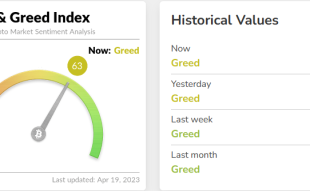Join Our Telegram channel to stay up to date on breaking news coverage
The year 2022 saw a significant increase in cryptocurrency-related investment scams in Australia, resulting in a loss of AUD 221.3 million ($148.3 million).
Cryptocurrency Scams Account for 7.1% of the $2.08 Billion Total Scammed in Australia in 2022
According to a report by the Australian Competition and Consumer Commission (ACCC), the figure represents a 162.4% increase from the previous year, with an average loss of AUD 56,600 ($37,900) per victim. The total amount of scams reported in Australia in 2022 was AUD 3.1 billion ($2.08 billion), with cryptocurrency scams accounting for 7.1% of the total amount.
Bank transfers were the most common method of payment used in scams, with 13,100 incidents amounting to $141 million. However, the value of each victim’s loss was lower than in cryptocurrency scams, with an average of AUD 16,000 ($10,700) per incident.
In contrast, cryptocurrency scammers were able to swindle victims out of 250% more value per incident. The data indicated that social media and networking apps were the primary methods used by cryptocurrency scammers to contact their victims, while phone and email were more frequently used in bank transfer scams.
ACCC Deputy Chair Catriona Lowe attributed the surge in scams to new technologies that have made it easier for scammers to deceive victims with increasingly sophisticated tactics. Lowe emphasized that the “true cost” of these scams extends beyond the financial damage, as they can also cause emotional distress to victims and their families.
The Australian government, law enforcement, and the private sector must strengthen their ties to combat these scams effectively and reduce the number of incidents, she added.
According to data from the ACCC scam database Scamwatch, the typical victim of an investment scam in Australia is a 65-year-old man who was contacted on social media or responded to a fraudulent advertisement. It usually takes several months before the victim realizes that they have been scammed. Imposter bond offers, initial public offerings (IPO), relationship or pig butchering schemes, and money recovery services are among the most common types of investment scams.
The ACCC stated in its report that the actual losses from scams are far higher than reported, as approximately 30% of victims do not report the incident to anyone, while only 13% of victims report the incident to Scamwatch. Therefore, the figures presented may only be the tip of the iceberg.
To tackle this problem, the ACCC, ReportCyber, the Australian Financial Crimes Exchange (AFCX), and other agencies have compiled data for the report, indicating that more needs to be done to combat cryptocurrency scams.
The ACCC is calling for greater public awareness, improved technology to prevent fraudulent activities, and increased collaboration between the public and private sectors to combat these scams effectively.
The surge in cryptocurrency investment scams in Australia is alarming, with victims losing millions of dollars. While the figures are concerning, the true cost of these scams extends beyond financial damage, causing emotional distress to victims, their families, and businesses.
The relevant authorities must collaborate to combat these scams effectively and protect vulnerable individuals from fraudulent activities.
Kaspersky Report Shares Increasing Number of Phishing Attacks
Crypto scams have become a prevalent issue in the cryptocurrency industry, and a recent report by Kaspersky has shed light on this problem. The report states that there has been a 40% increase in crypto phishing attacks in the year 2022, with Kaspersky detecting over 5 million such attacks compared to just over 3.5 million in 2021.
Phishing attacks are a type of cyberattack where attackers create fake websites or communication channels that resemble legitimate ones to deceive investors. The goal is to trick investors into providing personal information such as private keys, which the attackers can then use to gain unauthorized access to crypto wallets and assets.
While Kaspersky cannot predict whether this trend will continue in 2023, phishing attacks continue to be a persistent problem. In March of 2023, hardware cryptocurrency wallet provider Trezor issued a warning against attempts to steal users’ crypto by tricking investors into entering their recovery phrases on a fake Trezor site.
In a survey conducted by Kaspersky in 2022, one out of seven respondents admitted to being affected by cryptocurrency phishing. While phishing attacks predominantly involve giveaway scams or fake wallet phishing pages, attackers continue to evolve their strategies.
According to Kaspersky, “crypto still remains a symbol of getting rich quick with minimal effort,” which attracts scammers to innovate their techniques and stories to lure in unwary crypto investors.
Investors should be cautious when investing in the cryptocurrency market. One way to avoid falling victim to phishing attacks is to use reputable and trusted exchanges and wallets. Investors should also avoid clicking on suspicious links and never share their private keys with anyone.
The use of novel techniques by attackers to defraud investors is exemplified by the recent phishing attack against Arbitrum investors. According to reports, a hacker gained access to the Discord account of an Arbitrum developer and made a fraudulent announcement containing a phishing link. When users clicked on the link, they were directed to a blank webpage that displayed the text “Astaghfirullah,” which is a phrase used to seek forgiveness from God.
The cryptocurrency industry has seen a surge in phishing attacks in recent years, and investors must be cautious to avoid falling victim to these scams. Using reputable and trusted exchanges and wallets and being vigilant against suspicious links can go a long way in protecting one’s crypto assets.
As the industry continues to evolve, so do the tactics of bad actors, and investors must stay informed and aware to keep their investments safe.
Related Articles
Join Our Telegram channel to stay up to date on breaking news coverage


